The Peak District sights featured in Jane Austen's Pride and Prejudice
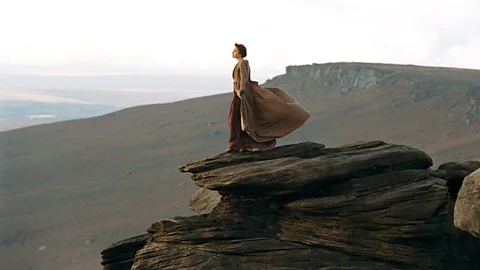 Alamy
AlamyAs the UK celebrates the writer's 250th birthday, there's never been a better time to explore the dramatic bluffs and picture-perfect villages connected to her most famous novel.
"There is not a finer county in England than Derbyshire," wrote 19th-Century novelist Jane Austen in Pride and Prejudice, arguably her most famous novel. Indeed, its idyllic stone villages and towns, verdant valleys, deep caverns, towering gritstone edges and windswept moorlands make the East Midlands county one of the best places to enjoy England's great outdoors.
Derbyshire played a starring role in Austen's novel, shining particularly in the latter half when its heroine, Elizabeth Bennet, travels north from Hertfordshire to the Peak District and is reunited with the book's romantic hero, Mr Darcy. Joe Wright's 2005 film adaptation brought the stunning scenery to the big screen, leading travellers to flock to Derbyshire and see the sights through their own eyes.
Yet, according to Hazel Jones, editor of the Jane Austen Society's Annual Report, there is no evidence that Austen actually ever visited Derbyshire. Instead, Austen would have read romanticised descriptions in contemporary journals of the county, which experienced a Georgian period boom in tourism, and completed "scrupulous research", says Jones.
"We just have to trust Jane Austen's instinct that Derbyshire is the perfect county for Pemberley [Mr Darcy's home] says Jones. "It is, after all, far enough away from Mrs Bennet."
This year not only marks the 250th anniversary of Austen's birth but also the 30th anniversary of the adapted BBC miniseries and the 20th anniversary of the four-time Oscar-nominated film – which will be re-released in select cinemas in the UK, US and Australia starting 20 April. As the weather warms and wildflowers blanket the region, it's an opportune time to explore the many landmarks and filming locations connected to one of the world's great love stories.
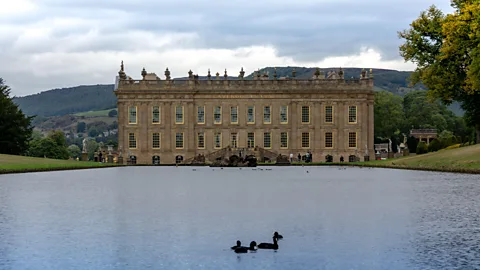 Alamy
AlamyPemberley
Any tour of Austen's Derbyshire should begin at Chatsworth House. Fittingly, the opulent Grade I-listed estate and stables were transformed into Pemberley, the home of Pride and Prejudice's wealthy suitor, Mr Darcy, in the 2005 film.
Chatsworth sits on 1,822 manicured acres on the banks of the Derwent river, and it is home to herds of deer and sheep as well as wild animals. Owned and lived in by 17 generations of the Devonshire family, it opened its doors to the public in 1708.
Tip:
Each June, Chatsworth hosts a screening of the Pride & Prejudice film in the gardens.
Today, visitors can tour the stately home to admire one of Europe's most significant private art collections, whose paintings, rare books and historical documents span more than four centuries. Visitors will eventually come to the sculpture gallery, which fans of the film will recognise – particularly the Veiled Vestal. Keep your eyes peeled in the gift shop for a bust of Darcy's head, though, unfortunately, it's not available to purchase – or kiss!
While you could easily spend a day exploring Chatsworth's 105-acre garden, dipping your toes into the 300-year-old Cascade waterfall, winding through the giant maze or running around the Willow Tree Fountain (a brass tree that might just soak you when standing underneath it), there are plenty of free walks you can take around the estate too.
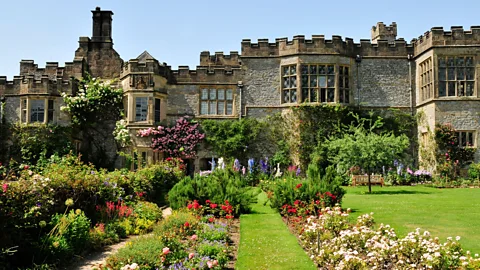 Alamy
AlamyMedieval manors
Derbyshire is home to many of England's finest aristocratic houses – including Sudbury Hall, which was used for the interior shots of Pemberley in the BBC adaption. And just a five-minute drive south of the town of Bakewell is Haddon Hall, which has been owned by the Manners family for the last 900 years. There's something magical about this country house, especially when the pale pink and red roses adorn the walls in the summer months. Wandering through the Elizabethan gardens feels like you're stepping back in time.
Film location scouts agree. Haddon Hall's medieval and Tudor architecture was also featured in Franco Zeffirelli's adaptation of Jane Eyre, The Princess Bride film, and more recently, Firebrand. Fans of the Pride & Prejudice film may recognise the wood-panelled banqueting hall, which served as the interiors of the fictional Inn at Lambton; and the parlour, which became Elizabeth Bennet's bedroom.
"There's a palpable magic at Haddon Hall, where centuries-old architecture meets the vibrant hues of summer," says Julie Mellor, filming coordinator at Haddon. "Beyond its visual splendour, Haddon offers a sanctuary of learning and culture."
Haddon runs a specialist film tour with experts who have been on the film sets, as well as variety of workshops and events ranging from art and craft sessions to ecological walks. "It's an idyllic setting that encourages reflection and discovery, making summer 2025 an ideal time to experience the romance and elegance that define it," says Mellor.
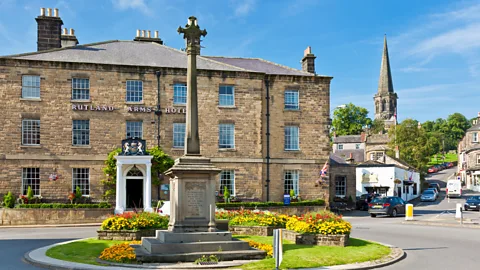 Alamy
AlamyBakewell
According to local lore, Austen stayed in Bakewell at the Rutland Arms Hotel and wrote much of Pride and Prejudice here. Some Austen experts dispute this claim, yet she does reference the market town in the novel as Elizabeth travels through it on her way to Pemberley.
More like this:
• How to celebrate Jane Austen on her 250th anniversary
• A Tolkien trail: Where to find the real-life Middle-earth
• Britain's tastiest town: Where Michelin chefs and gingerbread chefs reign
Set on the banks of the river Wye, bustling Bakewell is ideally situated between Chatsworth House and Haddon Hall. It's also the start of the 8.5-mile walking, jogging, cycling and wheelchair-accessible Monsal Trail, built atop a former Manchester-to-London railway line.
Bakewell is home to two traditional English sweet treats: the Bakewell pudding and Bakewell tart. For an authentic taste of both, head to The Old Original Bakewell Pudding Shop, which has sold the former since the 1800s (made with their secret recipe), and now sells tarts too.
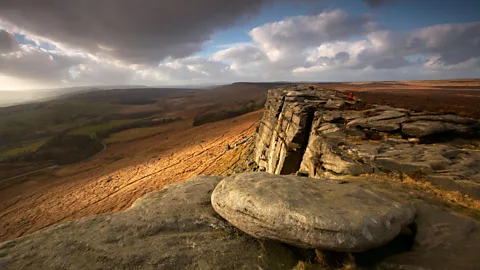 Alamy
AlamyStanage Edge
In the film adaptation, Bennet's arrival in Derbyshire is marked with an iconic shot of actress Keira Knightley standing atop the four-mile-long gritstone ridge of Stanage Edge, looking out onto the vast and dramatic Hope Valley beneath her. Two decades later, many Pride and Prejudice fans scour the Edge to find the exact spot where the actress stood – so much so it's often called "Keira Knightley rock".
England's first national park
In 1951, the Peak District became the first area in England to be designated a national park. While mostly covering Derbyshire, it also stretches into five neighbouring counties and welcomes some 13 million visitors each year. From hiking up tors to gentle riverside walks, or visiting castles and perusing historic market towns, there's something for everyone.
The windswept landmark's rugged terrain attracts climbers and hikers from across the country. Geologist Rob Donnelly tells the BBC that Stanage Edge's millstone grit is emblematic of the Peak District National Park (you will spot the circular stones as you travel around). "The gritstone edges form part of the Peak District's unique landscape," he says. "They are an iconic rock type in the region, having been laid down roughly 300 million years ago."
The Edge overlooks the village of Hathersage (reached via a six-mile walk through trails and woodland or a short drive), whose heated 30m outdoor pool makes for a scenic swim.
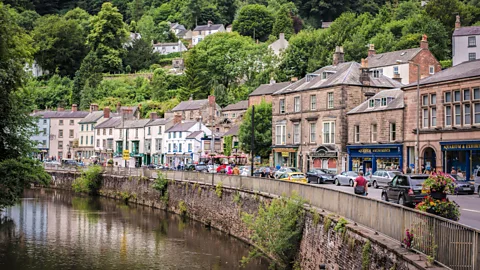 Alamy
AlamyMatlock and Matlock Bath
Set in the Peak District's south-eastern side and characterised as "celebrated beauties" by Austen are the twin towns of Matlock and Matlock Bath. Bennet travels through both locales on her way to Pemberley, and these namesake neighbours (Matlock is slightly bigger and lies about one mile north), are great bases for a stay in Derbyshire, with good transport connections, independent shops and cafes.
Try a Derbyshire oatcake
Not to be mistaken for the Scottish savoury biscuit, the Derbyshire oatcake is like a pancake but made from a fermented mixture of oatmeal, wheat flour and yeast. Top it with baked beans and cheese for a proper English experience in one of the many local cafes around Bakewell or Matlock, like the Chatsworth Farm Shop cafe, The Gallery Café or The Grand Pavilion Restoration Café.
The spa resort of Matlock Bath is frequently described as a seaside town without the sea. It has attracted visitors since the late 17th Century, when its thermal springs (which had previously been discovered and mined by the Romans) became used for medicinal purposes. Today, there is a historic outdoor swimming pool fed by mineral-rich natural spring water tucked around the back of the New Matlock Bath Hotel & Spa.
Austen was likely well aware of the town's famed thermal waters. When Bennet enters Derbyshire with apprehension about seeing Darcy, she says, "But surely … I may enter his county without impunity and rob it of a few petrified spars without his perceiving me." Austen might have been referring to Matlock Bath's petrifying well – where the mineral-rich thermal water, turns objects into stone.
Matlock is also popular with walkers as it lies in a valley of the River Derwent. Pride and Prejudice fans may opt to explore the fittingly named Lovers' Walks, a series of footpaths along the riverside, or if you'd prefer something more challenging, there are also trails that go up and over the wooded cliffs. But perhaps the most famous tourist attraction is the Heights of Abraham, where you can take a mountain cable car to the top of Masson Hill, a 60-acre hilltop estate with a panoramic view of the surrounding valley and town below.
It is remarkable to think that an author who may not have set foot in Derbyshire cast such a bright light on the county. By intertwining real places into her narrative, Austen masterfully carried the reader along with Bennet on her journey through Derbyshire to reconcile with Darcy. As Jones says in her book Jane Austen's Journeys, "What should be a truth universally acknowledged is that Jane Austen knew exactly what she was doing when she sent her liveliest heroine on the road north to Pemberley."
--
If you liked this story, sign up for The Essential List newsletter – a handpicked selection of features, videos and can't-miss news, delivered to your inbox twice a week.
